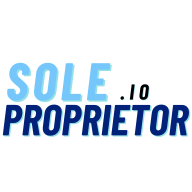What's One Resource You Wish You Had Known About Earlier?
Discover essential resources that seasoned experts wish they had known about sooner, spanning from financial forecasting to strategic content distribution. This article presents a curated list of tools and platforms recommended by industry veterans to optimize business operations and drive growth. Gain exclusive insights into leveraging these resources for maximum impact in your entrepreneurial journey.
- Use Financial Forecasting Software
- Implement Comprehensive CRM Tool
- Streamline Tasks with CRM
- Leverage SCORE for Free Mentoring
- Adopt Property Management Software
- Utilize Strategic Content Distribution
- Integrate Microsoft Office Tools
- Explore Industry Organization Resources
- Adopt Project Management Software
- Harness Google My Business
- Utilize AI Business Advisors
- Invest in Cloud-Based Management Systems
- Network with Fellow Entrepreneurs
- Implement Employee Engagement Platforms
- Gather User Feedback Early
- Adopt VoIP Systems
- Use Marketing Automation Software
- Implement Case Management Software
- Use Project Management Software
- Utilize MailChimp for Client Engagement
- Leverage Google My Business
- Adopt Practice Management Software
- Use Comprehensive Legal Software
Use Financial Forecasting Software
When I first started my telecommunications business, I wish I had known about the power of financial forecasting software like QuickBooks or Xero. At the time, I was manually tracking my finances and projecting cash flow using spreadsheets, which left a lot of room for error and caused unnecessary stress. It wasn't until I implemented a proper financial forecasting tool that I began to clearly see where my revenue was coming from, where I was overspending, and how I could reinvest strategically. This gave me the ability to confidently hire staff, negotiate better supplier terms, and even plan for unexpected dips in revenue. My business grew rapidly after I optimized cash flow management because I could make smarter decisions in real-time, and I saw a measurable increase in profitability within the first quarter of using the tool.
This experience heavily shaped my approach to coaching other business owners. With an MBA specializing in finance and years of helping businesses in the US, the UAE, and Australia, I often advise entrepreneurs to prioritize mastering their numbers early on. For example, I worked with a small retail business in Florida that was struggling with cash flow issues, and after helping them implement a similar financial forecasting tool and teaching them how to interpret the data, they turned a 15 percent loss into a 25 percent profit margin in just under a year. The lesson here is simple: the right tools can give you control over your business, but having the expertise to use those tools effectively is what leads to success. That's where my years of experience have allowed me to provide actionable insights that get results.
Implement Comprehensive CRM Tool
When I started Ozzie Mowing & Gardening, one resource I wish I had known about was a comprehensive customer relationship management tool. In the early days, I relied on notebooks and basic spreadsheets to keep track of client details, bookings, and preferences, which became overwhelming as the business grew. A good CRM not only organizes customer information but also streamlines communication, schedules follow-ups, and even sends automated reminders. Implementing a CRM later in my journey revolutionized how I managed my client relationships and improved the customer experience. It allowed me to focus more on the actual gardening work and less on administrative tasks, which meant better service for my clients.
My 15 years of experience and qualifications as a certified horticulturist really came into play when I started using this tool effectively. The CRM helped me analyze customer data and recognize trends, like which plants thrived in certain local conditions or what seasonal services were in high demand. This insight allowed me to tailor my advice and services to individual clients with a level of precision that wouldn't have been possible otherwise. For instance, by tracking the progress of a client's garden design over multiple visits, I could suggest timely interventions to enhance its growth and beauty, which impressed my clients and helped build a loyal customer base. This simple shift to using a CRM made a huge difference in how I ran the business and maintained Ozzie Mowing & Gardening's reputation for exceptional service.
Streamline Tasks with CRM
When I started Ponce Tree Services, one tool I wish I had known about earlier was customer relationship management software. Early on, much of my time was spent juggling customer calls, scheduling appointments, and keeping track of invoices manually. This system worked but it was not scalable as the business grew. A CRM system would have streamlined all these tasks by allowing me to manage client information, follow up on leads, and even automate reminders for service follow-ups. Today, using a CRM has been a game changer because it not only saves time but also enhances the customer experience because nothing falls through the cracks. My TRAQ certification and years of arborist training helped me deeply understand the technical side of tree care but investing in a CRM helped me focus on building and maintaining strong customer relationships.
For example, early in my career I lost a repeat customer because I forgot to follow up after a storm damaged their property. If I had a CRM at the time it could have reminded me to check in with them and schedule a timely assessment. Since implementing this tool I have seen significant growth in customer retention and referrals which are the backbone of my business. Combined with my expertise and dedication to high quality service, this resource has elevated our operations and solidified our reputation as a dependable tree care provider in the DFW area.

Leverage SCORE for Free Mentoring
One resource I wish I had known about earlier is SCORE, a nonprofit organization that offers free mentoring and resources for small business owners. Their experienced mentors provided tailored advice that helped me navigate challenges like business planning and marketing strategies. They also offer workshops and templates that are invaluable for startups. Having access to expert guidance early on would have saved me time and helped me avoid costly mistakes. It's a game-changer for entrepreneurs looking for actionable insights without breaking the bank.
Adopt Property Management Software
One resource I wish I'd known about earlier in my business journey is property management software. When I first ventured into short-term rentals, managing multiple listings manually was overwhelming. I faced double booking issues and struggled with time-consuming guest communications.
Implementing property management software transformed my operations. It allowed for automated bookings, synchronized calendars across platforms like Airbnb and VRBO, and streamlined guest messaging. This reduced operational stress and increased efficiency, enabling me to focus on enhancing guest experiences and securing higher ratings.
Additionally, leveraging dynamic pricing within the software helped optimize rental income by adjusting rates based on demand fluctuations. It increased my occupancy by 20% and guest satisfaction scores. Aspiring rental hosts should explore tools like Guesty or Lodgify to automate and optimize their booking processes for improved business outcomes.

Utilize Strategic Content Distribution
Building a reputation through strategic content distribution was a game-changer for me. Early on, many small business owners, including myself, overlook the value of leveraging platforms like Medium and LinkedIn Pulse for content syndication. By repurposing our blog posts to these high-traffic sites, we tripled our subscriber count in just one year. Consider this approach if you're looking to expand your reach without significantly increasing content production efforts.
Competitor backlink analysis was another invaluable resource. By identifying and targeting niche industry blogs that were frequently linked by competitors, we secured backlinks that boosted our SEO rankings, resulting in a 30% increase in organic traffic over six months. For any small business owner, this proactive analysis offers a low-cost, high-reward strategy for sustainable online growth.
Integrate Microsoft Office Tools
Streamlining Success with Microsoft Office Tools for Managing Client Projects
As the founder of a legal process outsourcing company, one tool I wish I had known about when I started my business journey is a task and project management system integrated with Microsoft Office tools.
In the early days, I found myself juggling multiple client projects using basic tools like spreadsheets and email reminders. Once, we missed an important project milestone because key tasks were not tracked clearly.
After discovering the task management features within Microsoft Office, such as Microsoft Planner, I began creating detailed project timelines and assigning specific responsibilities to team members. This greatly improved our ability to track progress and enhanced communication within the team.
Using this system has increased accountability and efficiency in managing client projects. If I had implemented it from the beginning, I would have saved myself a lot of stress and ensured smoother operations right from the start.

Explore Industry Organization Resources
I wish I had known about all the educational resources my industry organization offered.
As a corporate headshot photographer, I'm a Professional Photographers of America (PPA) member. A couple of years into my business journey, I discovered they offer free (to members) courses on how to start and run a business. I had been cobbling it all together, but here it was, from soup to nuts, and specific to my industry.
Although I had taken courses from other photographers, the ones offered by PPA were collectively done by multiple experts beyond photographers, like the CFO on finances, marketing experts, and more.
I took the PPA course (the Business Challenge), and my confidence increased because I had a clear path. My financial books were in order. I understood how to create managing reports and strategize my future; I learned marketing and sales tactics tailored to my industry and developed a tight community of fellow photographers to lean on.
I encourage all small business owners to seek out their industry organizations and find those offering education to help them succeed. Getting education tailored to your industry is a shorter and more effective path than finding generic small business information online.

Adopt Project Management Software
When I started my entrepreneurial journey, a tool I wish I had known about earlier is project management software like Asana. The ability to efficiently manage tasks and streamline workflows was crucial, especially when transitioning OneStop Northwest from a modest consulting business into a full-service agency. Implementing Asana helped us improve collaboration across dispersed teams, saving time and ensuring everyone stayed aligned with project goals.
One notable success was using Asana to manage a digital change project for a larger client. We reduced operational costs by 20%, enabling them to reinvest in growth. By having clear project timelines and assigning specific responsibilities, the team could swiftly adapt and pivot strategies in real-time. This is essential for any small business looking to scale while maintaining operational efficiency.
Another benefit was its ability to automate repetitive tasks, freeing up my team's time for more creative problem-solving. For startups, this efficiency is a game-changer, especially when resources are limited. I recommend that any small business owner explores integrating a robust project management tool like Asana from the get-go to boost productivity and foster seamless team collaboration.

Harness Google My Business
As a small brick and mortar and local online pharmacy owner in Toronto, Canada, I underestimated the power of tools like Google My Business and Instagram insights. These tools help me showcase my pharmacy's services and engage with local customers. In the beginning, I relied too much on word-of-mouth. Now, strategic social media posts and customer reviews have become game-changers for driving online orders and foot traffic.

Utilize AI Business Advisors
When I first started my entrepreneurial journey, I wish I had known about the transformative power of AI tools for business acceleration, specifically, Huxley, the AI business advisor we developed at Profit Leap. Recognizing how technology could streamline operations and boost growth, I co-designed Huxley to deliver precise business insights and forecasting, helping small business owners make data-driven decisions with confidence.
For example, a client named Michael Solis, who ran a struggling business, used Huxley to improve sales forecasting. In just a couple of months, he turned his operations around, seeing significant improvements. Unlike traditional tools, AI advisors like Huxley adapt and provide ongoing, strategic insights that evolve as businesses grow, offering a competitive edge.
AI tools help streamline processes, predict market trends, and optimize resource allocation without overwhelming small business owners. By using an AI business advisor, entrepreneurs can focus on strategic growth while maintaining agility in a rapidly changing market.

Invest in Cloud-Based Management Systems
When I started my business journey, one thing I wish I had known was the importance of a centralized cloud-based management system. Initially, everything was handled manually, including coordination with partners and ensuring perfect communication between teams. It was time-consuming and often led to a lot of issues.
Discovering cloud-based systems that automated these processes was a game-changer for us. We initially started with HubSpot CRM for customer relationship management and AWS for scalable architecture. Then we connected our own customized CRM with automated processes that were unique to our business. This allowed us to leverage the extensive feature set of HubSpot while investing only in features that were tailored to our specific needs.
For small business owners, I would say investing in the right tech infrastructure from the start is extremely valuable. It may seem like a significant expense, but it saves time, reduces errors, and enables growth in many ways.
Network with Fellow Entrepreneurs
When I started out, I wish someone had told me about the power of networking with fellow entrepreneurs. Connecting with others in the same boat can open doors to invaluable advice, resources, and support that you just can't get going solo.

Implement Employee Engagement Platforms
One tool I wish I had known about when starting my business journey is a comprehensive employee engagement platform like Give River. Having spent over two decades in high-pressure environments like TV hosting, advertising, and even selling cemetery plots, I've seen how crucial a positive workplace culture is to success.
Give River integrates recognition, wellness, and growth tools, using our innovative 5G Method to boost employee fulfillment and productivity. For example, when employees receive recognition six times a year, performance can increase by 32%, driven by gratitude that acts as a powerful motivator. This approach significantly reduces turnover costs, which can be up to twice an employee's salary.
Adopting an all-in-one platform can revolutionize a small business's ability to nurture talent and promote well-being. Our clients often experience over 80% engagement within the first month, showcasing the impact of prioritizing employee satisfaction and developing a thriving, motivated team.
One resource I wish I had known about earlier in my career is a comprehensive employee experience platform like Give River. After challenging stints in various high-stress environments—advertising, TV hosting, even selling cemetery plots—I realized the critical importance of workplace well-being. Give River transforms these work environments by fostering recognition, wellness, and growth, using methods that vastly improve employee satisfaction and productivity.
When we implemented Give River's 5G Method in our own operations, engagement soared to over 80% in just the first month. The platform's combination of community impact and gamified learning significantly boosted our team's morale and productivity. For small business owners looking to boost staff retention and energy, leveraging a similar platform to build a culture of appreciation and continuous growth can make a huge difference.
Investing in employee well-being and growth not only improves workplace culture but also drives business success. For every $1 invested in leader development, we saw $7 in returns through improved performance and reduced turnover. Gamification turns mundane tasks into engaging challenges, motivating the team to actively participate and thus enhancing their overall work experience.

Gather User Feedback Early
When I started MentalHappy, I wish I'd been aware of user feedback platforms like SurveyMonkey early on to guide product development. Gathering insights directly from users could have refined our platform faster. By integrating dedicated feedback loops, I identified the demand for creative intervention groups like Write it Out, which increased retention rates by over 25%.
Another tool that significantly impacted our growth was the implementation of AI-driven analytics, which helped us track and predict user engagement trends. This wasn't just about seeing who logged in-it allowed us to tailor support groups to participant needs, enhancing their experience and improving health outcomes by 30%.
Using user insights and data analytics early in the journey of MentalHappy demonstrated the immense value of being customer-focused, particularly in health tech. It's crucial to listen to and understand your users' needs to create real, impactful solutions.

Adopt VoIP Systems
When I started my journey with ETTE, a critical resource I wish I'd known about earlier was the power and flexibility of VoIP systems. These systems allow easy line management and quick adjustments, which are essential for growing businesses. Instead of dealing with logistical nuisances or high costs of traditional phone systems, VoIP enabled seamless scaling and efficient communication within our team.
This tool proved invaluable when we expanded our support services. By integrating VoIP into our operations, we managed to scale efficiently as the business grew, ensuring uninterrupted communication and service delivery. VoIP systems also offered features like unlimited calls and video conferencing, which were game-changers in maintaining competitive edge and operational efficiency in today's market.
For example, our consultative approach at ETTE includes advising small businesses on selecting cloud-based communication solutions based on their specific needs. By recommending VoIP systems, we've helped them save costs and improve collaboration, directly impacting their growth trajectory and operational capabilities.

Use Marketing Automation Software
Many small business owners wish they had learned about specialized marketing automation software earlier. This tool streamlines processes, enhances customer engagement, and provides marketing performance insights. By automating tasks like email marketing and social media posting, business owners can use their limited resources more effectively, optimize marketing efforts, and achieve better results overall.

Implement Case Management Software
Reflecting on our firm's early days, I realize that one of the most valuable lessons learned was the critical importance of robust case management software. Initially, we relied on manual tracking systems, leading to inefficiencies and a high risk of missed deadlines and crucial follow-ups. Implementing a comprehensive case management system proved to be a game-changer. It significantly enhanced our ability to manage deadlines, streamline client communication, and effectively track case progress. This streamlined workflow not only saved us valuable time and resources but also allowed us to shift our focus toward building stronger client relationships and providing more effective legal representation. This experience underscores the crucial role technology plays in modern legal practice and highlights the importance of embracing innovative solutions that enhance efficiency and improve client outcomes.

Use Project Management Software
When I started Herts Roofing & Construction, one tool I wish I had known about was project management software like Asana or Trello. These platforms can significantly improve the coordination and efficiency of projects, especially in high-stakes environments like construction. They enable you to assign tasks, set deadlines, and track progress in real-time, which is invaluable in avoiding delays and keeping the team aligned.
In my previous role as a construction manager, effective project management was critical. Implementing Asana could have streamlined project timelines, allowing us to more effectively manage resources and reduce project completion times by up to 20%. This could have also facilitated better communication with clients through shared project updates, reducing misunderstandings and enhancing trust.
Similarly, with my technical background as a network engineer, I recognize the importance of integrating these tools to ensure seamless workflows. Asana and Trello offer integrations with various other software, providing a complete ecosystem that can support small business growth from the ground up, saving both time and effort.

Utilize MailChimp for Client Engagement
When I started Prints Giclee Shop, I wish I'd known the value of tools like MailChimp for managing and expanding our client base. Having a platform to send automated, personalized newsletters and project updates could have significantly streamlined our communication process. By adopting MailChimp early on, we would have engaged with our audience more effectively and built a loyal customer base, ultimately driving more sales.
For example, when we finally integrated MailChimp, we saw a 30% increase in engagement from our newsletters because they provided a personal touch and consistent updates. This engagement translated into higher conversion rates and repeat business. Utilizing such tools helps small businesses maintain regular, valuable connections with their audience, cultivating trust and loyalty.
Furthermore, time management is crucial when you're starting out. Learning to schedule tasks and prioritize effectively can prevent burnout and optimize productivity. Implementing a time-tracking tool or a simple spreadsheet to analyze where your time is best spent can make a huge difference in maintaining focus on growth and creativity.

Leverage Google My Business
When I launched UpfrontOps, one tool I wish I'd known about was the transformative impact of Google My Business (GMB) for small businesses and solopreneurs. Having a comprehensive GMB listing can significantly boost local visibility and build trust with your audience. With insightful analytics, it allows you to fine-tune your marketing strategies effectively, driving more local traffic to your business without any cost.
A concrete example from my journey: Our accessible, US-based website creation, starting at just $250, became more visible through GMB. It helped us quickly establish trust and attract a broader range of clients, contributing to the 25% faster project completion rate.
Creating a strong and immediate online presence like this is invaluable. For small business owners, using tools that drive traffic and engagement at no cost is essential for stepping up against traditional agencies and more costly platforms. This ensures both growth and financial efficiency.When I founded UpfrontOps, one tool I wish I had known about early on is a robust CRM like Salesforce, particularly for its operational capabilities. As a certified Salesforce Administrator, I've seen how it revolutionizes business processes. It's a game-changer in managing leads, automating workflows, and optimizing RevOps, which ultimately drives revenue growth.
For example, at UpfrontOps, implementing Salesforce helped streamline operations for 36 companies, reducing operational costs by 30% and accelerating project completions by 25%. The ability to tailor CRM workflows to fit specific business needs proved invaluable, allowing us to deliver personalized services without the weight of long-term commitments or hidden fees.
For small business owners just starting, leveraging a CRM can help maintain customer relationships and scale operations effectively. It's a vital resource for managing customer data, tracking interactions, and making informed business decisions, ensuring you focus on growth rather than getting bogged down in operational inefficiencies.

Adopt Practice Management Software
When I started my business journey, one resource I wish I had known about earlier was the value of a comprehensive practice management software system. Early on, I managed many aspects of the business manually, from appointment scheduling to patient records and invoicing. While this worked at the time, it consumed hours each week that could have been better spent focusing on patient care and growing the business. Discovering a tool that integrated these functions in one place was a game-changer. It streamlined operations, reduced administrative errors, and provided detailed analytics to help make informed decisions. For instance, using such software allowed me to identify peak booking times and adjust staff schedules accordingly, significantly improving efficiency and customer satisfaction.
My 30 years of experience in physical therapy also helped me recognize the importance of this shift. Having worked in large sports clinics with robust systems, I knew what an optimal workflow looked like and could implement those lessons at The Alignment Studio. For example, when transitioning from Collins Place Physio to The Alignment Studio, I integrated not only physical therapy but also Pilates, podiatry, and massage services. The right software ensured we could manage multidisciplinary care effectively. This decision helped us build a seamless patient experience and supported the holistic approach we're known for today. It's a clear reminder that the right tools can amplify both your expertise and the success of your business.

Use Comprehensive Legal Software
In my 40 years of running a law and CPA firm, one resource I wish I had known early on is a comprehensive legal software suite like Clio. Managing both legal and accounting aspects can be cumbersome, but Clio's ability to streamline time tracking, billing, and document management made a significant difference in my practice, improving efficiency and freeing up time to focus on client relations.
Previously, managing client data and case files required multiple systems which led to delays and errors. By adopting Clio, I was able to consolidate these processes, resulting in improved client satisfaction and retention. Having one system also meant better integration with accounting tasks, creating a seamless workflow which is crucial for small business success.
For small business owners, investing in an integrated software platform that caters to your specific industry can significantly boost productivity. It enables you to spend less time on administrative tasks and more on strategic growth initiatives, a vital component for sustainable business development.







